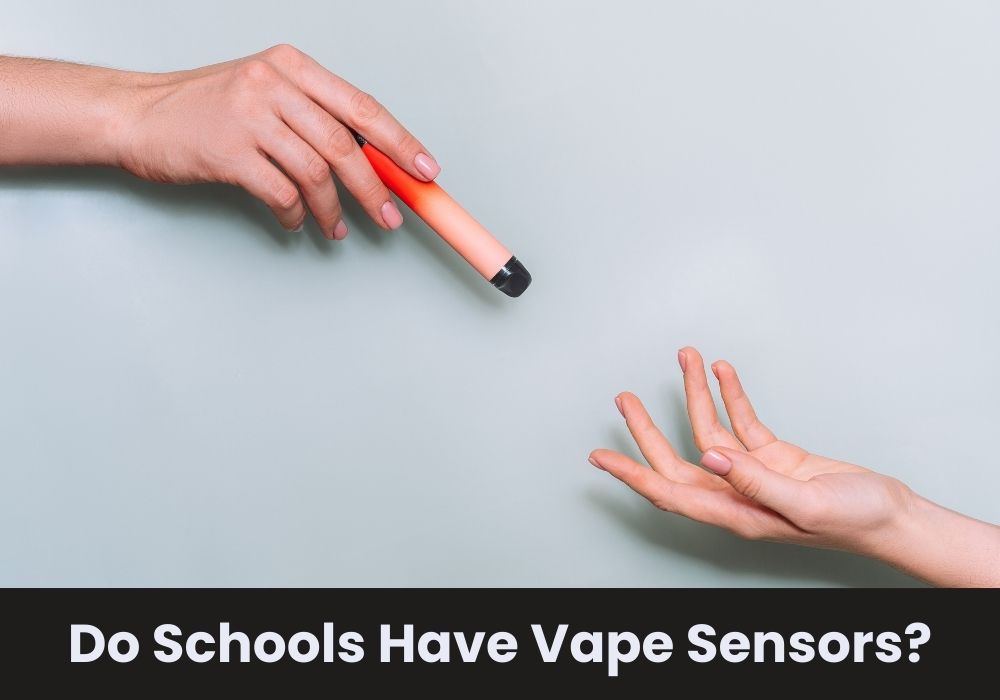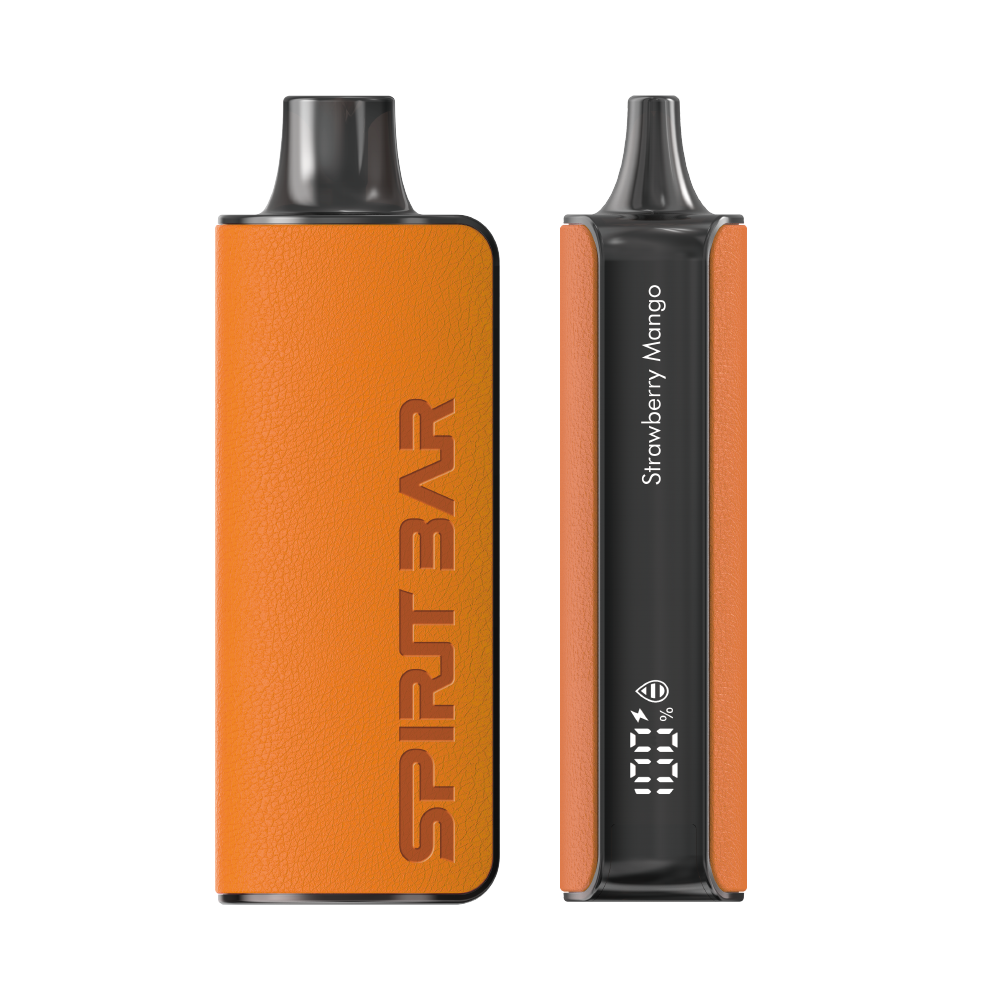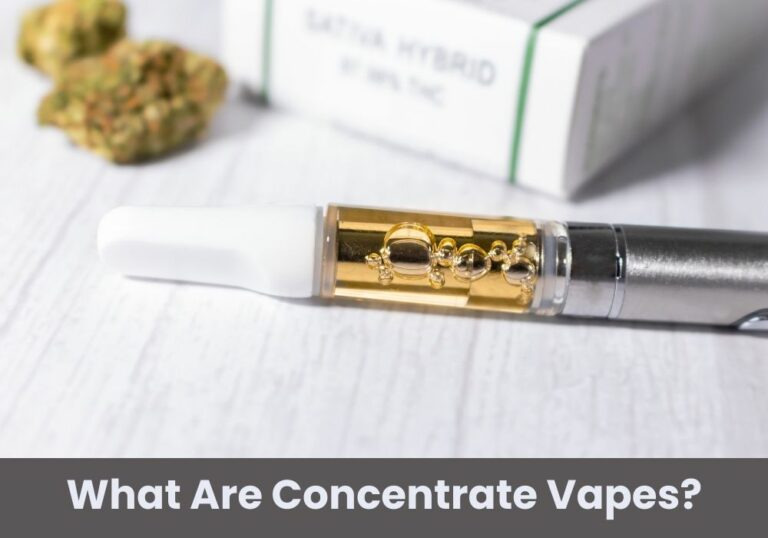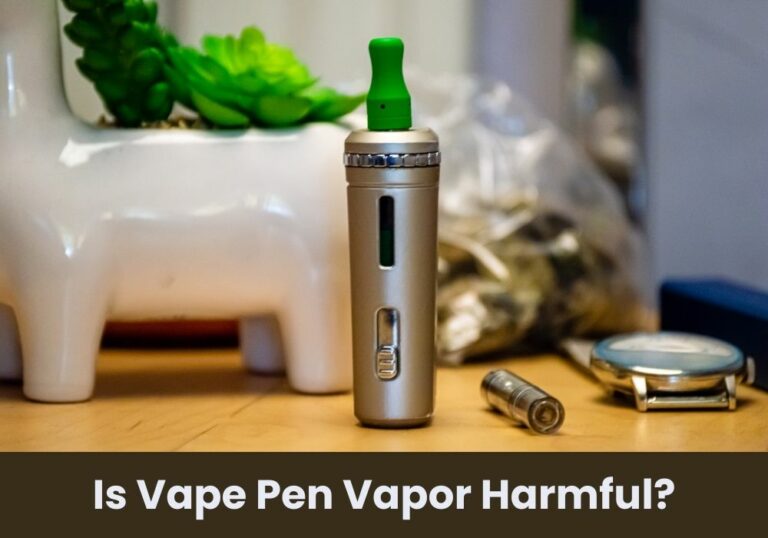
Are you wondering if your school has vape sensors? With the rise of vaping among young people, many schools have installed sensors to detect e-cigarette use on campus. These sensors are designed to detect nicotine and THC, the active ingredient in marijuana, and are becoming increasingly popular in middle and high schools as a way for districts to enforce their policies on drug, cigarette, and vape use.
Schools that have decided to install vapor-detecting devices are putting them in areas where e-cigarette use is most common, like bathrooms. However, some students have found ways to circumvent the sensors, leading to concerns about their effectiveness. In addition to sensors, some schools are also using Juul settlement money to fund other anti-vaping initiatives, such as educational programs and counseling services for students struggling with addiction.
What are Vape Sensors?
Vape sensors are devices designed to detect the presence of vaping in schools, particularly in areas where smoking or vaping is prohibited. These sensors are becoming increasingly popular in middle and high schools as a way for districts to enforce their policies on drug, cigarette, and vape use.
These sensors detect nicotine and THC, and they’re becoming more sophisticated as vaping implements become harder for school officials to detect on students. Schools in Alabama have invested hundreds of thousands of dollars in vape detection equipment, like the HALO Smart Sensors, which can detect vaping in bathrooms, hallways, and classrooms.
Vape sensors can alert school officials when a student is vaping, allowing them to take appropriate action, such as confiscating the device or administering disciplinary measures. Some vape sensors can even send real-time alerts to school administrators and law enforcement.
It’s worth noting that vape sensors are just one part of a holistic safety strategy in schools. Schools are also implementing environmental sensors to detect vaping addiction and other potentially addictive substances in schools. K-12 school leaders have long worked to intercept cigarettes, cannabis, and other potentially addictive substances in schools, and recently, they have been using vaping detection technology to engage the latest growing challenge.
Prevalence of Vape Sensors in Schools
If you are wondering whether schools have vape sensors, the answer is yes. Vape sensors, also known as vape detectors or environmental sensors, are specialized devices that can detect the chemicals in e-cigarette aerosol. Schools have been installing these sensors to combat the growing trend of e-cigarette use among students.
SPIRITBAR Katana BP10000
- Slender, leather-textured body reminiscent of a katana handle for an authentic samurai feel
- Unique samurai-inspired e-liquid flavor - fruity yet not too sweet, with a luxurious, elegant aroma
- Powerful 650mAh rechargeable battery for extended vaping time
- Large 18ml e-liquid capacity and 10,000 puff capacity
- Advanced mesh coil and e-liquid & power display screens for optimal vaping experience
The special juice captures the essence of the samurai spirit with its rich, smoothly pulsating flavor that brings new satisfaction with every puff. The device's slender, leather-textured design evokes the grip of a samurai's katana, making this product a perfect choice for beginner vapors.
According to a report by Campus Safety Magazine, vape sensors are highly reliable and can detect nicotine and THC in the air. These sensors are becoming increasingly popular in middle schools and high schools as a way for districts to enforce their policies on drug, cigarette, and vape use. As vaping implements become more sophisticated, they are harder for school officials to detect on students. Therefore, vape sensors are an important tool in the fight against e-cigarette use in schools.
The prevalence of vape sensors in schools is increasing rapidly. In a report by EdTech Magazine, some schools are putting environmental sensors at the forefront of vaping addiction response. Schools are using these sensors to detect vaping in bathrooms, locker rooms, and other areas where students may try to hide their e-cigarette use. The report also states that teachers and administrators are at a loss about what to do, as students are so addicted that they cannot stop. Therefore, vape sensors are a necessary tool for schools to combat the vaping epidemic.
In conclusion, the prevalence of vape sensors in schools is increasing as schools try to combat the growing trend of e-cigarette use among students. These sensors are highly reliable and can detect nicotine and THC in the air. Schools are using these sensors to enforce their policies on drug, cigarette, and vape use.
Legality and Ethics of Vape Sensors in Schools
Legal Perspective
From a legal perspective, installing vape sensors in schools can be a tricky issue. While some states have laws that prohibit vaping on school grounds, others do not. In states where vaping is not illegal on school grounds, installing vape sensors could be seen as an invasion of privacy.
SPIRITBAR Jack’s Flask 9000 Puffs
- Stylish pirate flask-shaped body providing an exciting vaping experience
- Delivering up to 9000 puffs per device
- 20ml e-liquid capacity with 50mg nicotine strength for satisfying throat hit
- Specialized pirate-themed e-juice flavors for rich, swirling taste
- Premium mesh coil optimizes flavor profile for maximum vaping enjoyment
This disposable vape captures the daring spirit of the high seas with its flask styling and signature pirate e-juice flavors. The extraordinary battery life provides 9000 indulgent puffs for extended vaping pleasure. Live boldly and freely with the Jack's Flask - a legendary vaping experience fit for a pirate's adventures.
Additionally, there are concerns about the legality of using the data collected by vape sensors. Schools must be careful to ensure that they are not violating any student privacy laws when collecting and using this data.
Ethical Perspective
From an ethical perspective, there are also concerns about the use of vape sensors in schools. Some argue that installing vape sensors sends a message to students that they are not trusted and that their privacy is not respected.
Others argue that schools have a responsibility to keep students safe and healthy, and that installing vape sensors is a necessary step in achieving this goal.
There are also concerns about the potential for false positives with vape sensors. Schools must ensure that they are not punishing students unfairly based on faulty data collected by these sensors.
Overall, the use of vape sensors in schools raises important legal and ethical questions that must be carefully considered before any decisions are made.
Effectiveness of Vape Sensors
Vape sensors are becoming increasingly popular in schools as a way to enforce policies on drug, cigarette, and vape use. These sensors detect nicotine and THC and can monitor the surrounding area for the chemical signature of smoke, vape, or THC. They are becoming more sophisticated, making it harder for school officials to detect on students.
One advantage of vape sensors is that they can detect vaping in areas that are not easily visible, such as restrooms, locker rooms, classrooms, stairwells, and stage areas. This makes it easier for school officials to detect and address vaping, which can be a challenge in large schools with many students.
However, some students have found ways to outsmart the sensors, such as by using towels or plastic bags to cover them. Additionally, vape sensors can be expensive to install and maintain, which can be a barrier for some schools.
To maximize the effectiveness of vape sensors, it is essential to have a viable response plan for vape alerts. Schools must assign alerts to parties who can respond immediately. For some schools, the alerts come to the principal, but he or she may not be able to respond to the alerts in a timely manner. Therefore, it is important to have a designated response team that can quickly address any vaping incidents.
In summary, vape sensors can be an effective tool for schools to enforce policies on drug, cigarette, and vape use. However, they are not foolproof, and students may find ways to outsmart them. To maximize their effectiveness, schools must have a viable response plan for vape alerts and a designated response team that can quickly address any vaping incidents.
SPIRITBAR Katana BP10000
- Slender, leather-textured body reminiscent of a katana handle for an authentic samurai feel
- Unique samurai-inspired e-liquid flavor - fruity yet not too sweet, with a luxurious, elegant aroma
- Powerful 650mAh rechargeable battery for extended vaping time
- Large 18ml e-liquid capacity and 10,000 puff capacity
- Advanced mesh coil and e-liquid & power display screens for optimal vaping experience
The special juice captures the essence of the samurai spirit with its rich, smoothly pulsating flavor that brings new satisfaction with every puff. The device's slender, leather-textured design evokes the grip of a samurai's katana, making this product a perfect choice for beginner vapors.
Alternatives to Vape Sensors
If you’re concerned about vaping in schools but don’t want to install vape sensors, there are other alternatives to consider. Here are a few options:
Education and Prevention Programs
One of the most effective ways to combat vaping in schools is through education and prevention programs. By teaching students about the dangers of vaping and providing them with resources to quit, you can help prevent them from starting in the first place. Many organizations offer free resources for schools, such as posters, brochures, and presentations, that can be used to educate students about the risks of vaping.
Increased Supervision
Another option is to increase supervision in areas where vaping is more likely to occur, such as bathrooms and outdoor areas. By having more staff members present in these areas, you can deter students from vaping and catch those who do. Additionally, having staff members monitor social media for signs of vaping can help identify problem areas and prevent future incidents.
Physical Barriers
Installing physical barriers, such as doors that lock from the outside or partitions between bathroom stalls, can also help prevent vaping. By making it more difficult for students to vape in private, you can reduce the likelihood of it happening. However, it’s important to note that this option may not be feasible for all schools due to budget constraints or building regulations.
Alternative Activities
Finally, providing alternative activities for students can help reduce the appeal of vaping. By offering after-school programs, sports teams, or other extracurricular activities, you can give students something to do instead of vaping. Additionally, providing healthy snacks and drinks can help satisfy cravings and reduce the likelihood of students turning to vaping as a way to cope.
Remember, there’s no one-size-fits-all solution when it comes to preventing vaping in schools. It’s important to consider your school’s unique needs and resources when deciding on the best approach.
Parents and Teachers’ Perspectives on Vape Sensors
Parents’ View
As a parent, you want your child to be safe while they are at school. With the rise of vaping among students, many parents have become concerned about the health risks associated with e-cigarette use. That’s why some parents have advocated for the installation of vape sensors in schools.
Vape sensors can help detect the presence of e-cigarette aerosol in the air, alerting school officials to potential vaping activity. This can help deter students from vaping and can also help school officials address the issue before it becomes a larger problem.
However, some parents have expressed concerns about the potential invasion of privacy that vape sensors could represent. They worry that the sensors could be used to monitor students in other ways, or that they could be used to unfairly target certain students.
Teachers’ View
As a teacher, you want to create a safe and healthy learning environment for your students. Vaping can be a distraction in the classroom and can also pose health risks to students. That’s why some teachers have welcomed the installation of vape sensors in schools.
Vape sensors can help teachers identify potential vaping activity and can help them take appropriate action to address the issue. This can help maintain a distraction-free learning environment and can also help protect the health of students.
However, some teachers have expressed concerns about the cost of installing and maintaining vape sensors. They worry that these costs could be a burden on already-strained school budgets, and that the money could be better spent on other resources.
Overall, the use of vape sensors in schools is a topic of debate among both parents and teachers. While they can help identify potential vaping activity and maintain a safe learning environment, there are also concerns about privacy and cost.
Impact on Student Behavior
Installing vape sensors in schools can have a significant impact on student behavior. By detecting the presence of e-cigarettes, these sensors can help deter students from vaping on school grounds. Here are some ways in which the use of vape sensors can impact student behavior:
- Preventing Vaping: Vape sensors can help prevent students from vaping in areas where it is difficult to supervise them, such as restrooms, locker rooms, alcoves, and stairwells. By detecting the presence of e-cigarettes, these sensors can alert school officials to the presence of vaping and help prevent students from engaging in this behavior.
- Promoting a Healthier Environment: By discouraging vaping on school grounds, vape sensors can help promote a healthier environment for students. Vaping can have negative health effects, and by preventing this behavior, schools can help create a safer and healthier environment for students.
- Reducing Peer Pressure: Vaping is often a social activity, and peer pressure can play a significant role in encouraging students to engage in this behavior. By detecting the presence of e-cigarettes, vape sensors can help reduce peer pressure and discourage students from vaping.
- Encouraging Responsible Behavior: By promoting a healthier environment and reducing peer pressure, vape sensors can encourage students to engage in responsible behavior. This can help create a positive school culture and promote a sense of responsibility among students.
Overall, the use of vape sensors in schools can have a significant impact on student behavior. By preventing vaping, promoting a healthier environment, reducing peer pressure, and encouraging responsible behavior, these sensors can help create a safer and more positive school environment for all students.
Future Trends in Vape Detection
As schools continue to combat the growing trend of vaping, there are several future trends in vape detection that may become more prevalent in the coming years.
Artificial Intelligence (AI)
One trend that is gaining traction is the use of artificial intelligence (AI) to detect vaping. AI can analyze patterns and detect anomalies in real-time, allowing for quick identification and response to potential vaping incidents. This technology can also be used to monitor social media for vaping-related posts and alert school officials.
Portable Vape Detectors
Another trend is the development of portable vape detectors that can be used outside of the school environment. These detectors can be used at school events, on school buses, and even in students’ homes to monitor vaping activity. They are small and discreet, making them easy to carry and use.
Scent Detection
Scent detection is another trend that may become more prevalent in the future. Dogs have been used for years to detect drugs and explosives, and now they are being trained to detect vape scents. This technology can be used to quickly and accurately detect vaping in schools and other public places.
Smart Vape Detectors
Smart vape detectors are another trend that is gaining popularity. These detectors are connected to the internet and can send alerts to school officials when vaping is detected. They can also be programmed to send alerts to parents and guardians, allowing for quick and efficient communication in the event of a vaping incident.
Overall, these future trends in vape detection show promise in helping schools combat the growing trend of vaping. As technology continues to advance, it is likely that more innovative solutions will emerge to help schools keep their students safe and healthy.








